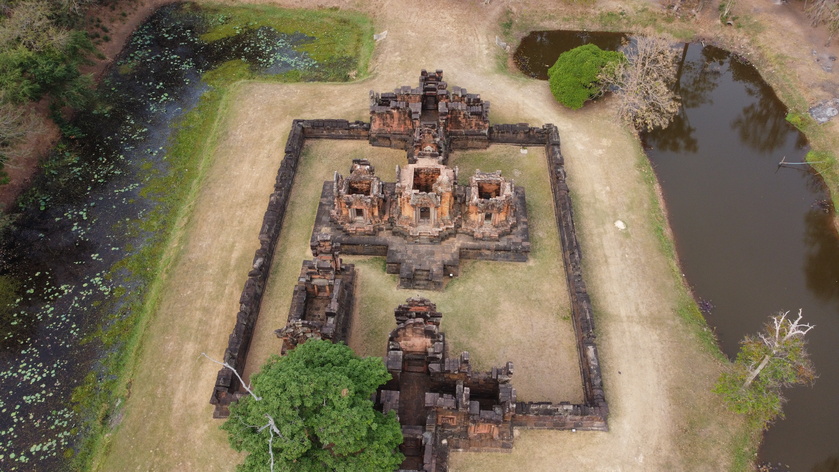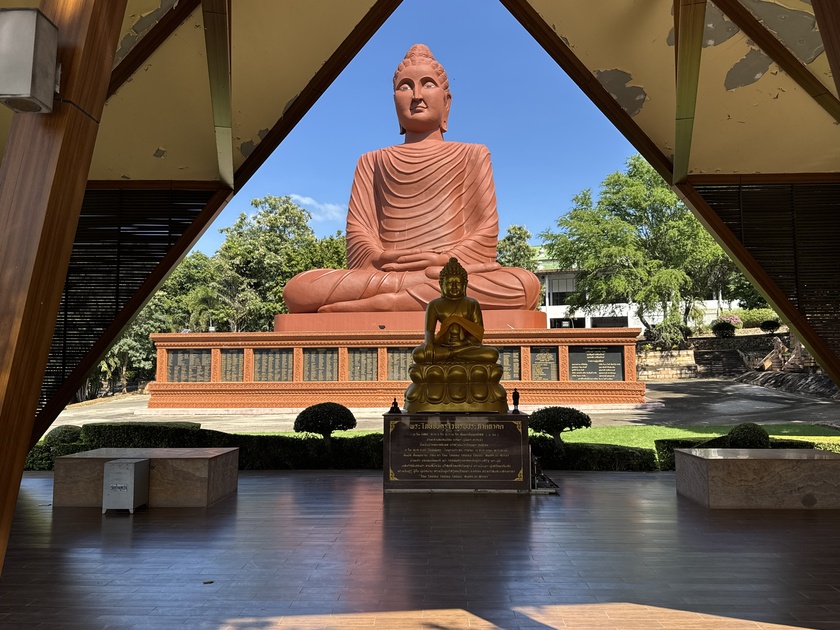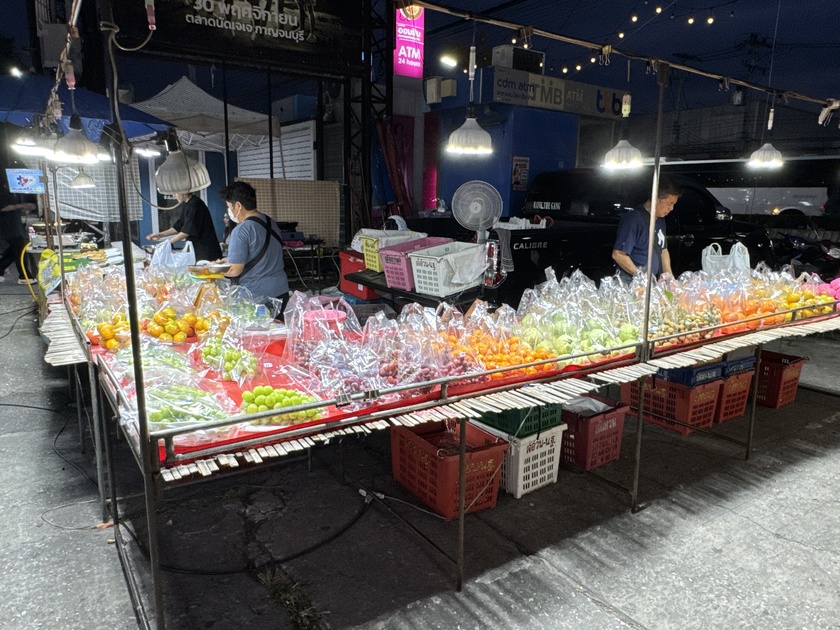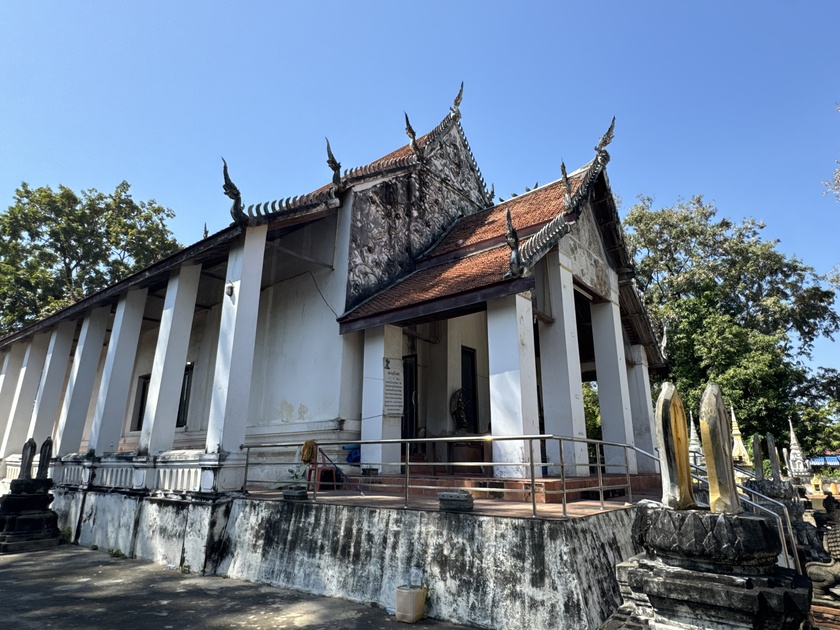Prasat Pueai Noi is a Khmer sanctuary located in Pueai Noi, Khon Kaen, Thailand. It is believed to have been built in the 16th-17th century, of the Buddhist calendar, as a place to perform Hindu religious rituals.
The sanctuary consists of three main buildings and a library surrounded by a moat representing Mount Meru.
Each pagoda has a sandstone lintel with designs and a smaller chapel and a lintel with clear, lovely designs.
A laterite wall surrounds the compound, and there is a pool just beyond it. The place is still well-preserved, and the lintel depicting reclining Vishnu is still rich in detail. It is noticeable that it has been renovated but that doesn’t take away from the styling at this temple.
The ruins are about an hour to an hour and a half south of Khon Kaen. It’s not large but it is very secluded. You can explore without the large crowds and is worth special trip for anyone that enjoys this part of the regions history.
Prasat Pueai Noi ...
Not just another temple, Tham Phu Wa Temple is about 25 km outside of Kanchanaburi and situated in some hills to the west.
When you first come to the temple you are greeted with manicured gardens. The next thing you see is a brown reclining Buddha and a large seated Buddha made from the same stone. The ordination hall and Wihan also have the brown stone with Cambodian styling to the buildings.
These buildings and statues are fairly recent additions to the temple. After admiring them for a little while the main attraction to the temple is behind the ordination hall in a very large cave. The cave was the original temple and was used for meditation by worshipers. It houses a 100 year old Buddha statue, many relics that have been brought into the area from Myanmar as well as interesting rock formations inside the cave.
The temple is a very nice place to visit, for Thais as well as tourists. The architecture and location make this something that should be on anyones list while in Kanchanaburi....
JJ Night Market Kanchanaburi
Located near the Kanchanaburi railway station, JJ Night Market is a local night market offering a variety of products and services. It is a busy market with a range of food stalls serving traditional Thai cuisine, as well as shops selling clothing, accessories, and souvenirs.
Located not far from Kanchanaburi railway station, the Kanchanaburi Night Market takes place every evening from around 5 to 9 pm. It is a local market and not geared to tourists making it a great way to experience a bit of Thai culture while trying some of the local favorite foods.
It’s a great way to spend an evening after exploring the area and is a short distance from the famous world war 2 bridge over the Kwai River as well as the majority of hotels.
JJ Night Market Kanchanaburi - Street Food & More - Thailand 2025
Wat Nang Kui วัดนางกุย
Wat Nang Kui or the Monastery of the Lady named Kui is an active temple located
off the city island in the southern area. The monastery is situated along the Chao Phraya River. To its west side lies Wat Khun Phrom and to its south Wat Mai Bang Kaja.
The monastery was built in 1587, a few years after the first fall of Ayutthaya. The construction was sponsored by a wealthy woman called Lady Kui, thus the name of the temple. After the second fall of Ayutthaya the monastery was left empty and neglected until in the Bangkok period during the Reign of King Rama III, the monastery was renovated.
The temple is actually known for its sandstone Buddha image, Mae Takhian Thong and Luang Pho Yim statue.
Historical data about the monastery is unknown.
From the temple you have nearly a straight view on Pom Phet or the Diamond Fort. It is assumed to have been occupied by the Burmese army in the last battle for Ayutthaya in 1767.
Vihara of Mae Takhian Thong
The vihara of Mae ...




















































